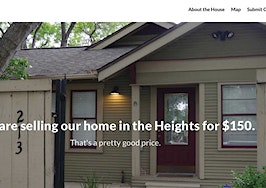What happens when a seller tells you “the market is back” and uses it to justify an unrealistically high price on their listing? This isn’t a theoretical question — it’s something that several of our coaching students have asked us recently, so we decided to tackle the subject on air on “Real Estate Coaching Radio.”
Yes, today’s market is improving, and most homes are worth more because of it — but what does “more” mean? For a lot of agents, it could mean unrealistic seller expectations, so let’s talk about how to approach a client that is clearly overpriced but isn’t seeing it.
What does “The market’s back” actually mean?
The point of this discussion is to help you handle your seller clients who are pushing for higher and higher prices.
Your goal is to price the home to get top dollar for your sellers — without overpricing and causing an appraisal issue — while at the same time not losing the listing to some other agent who overpromises. It’s a delicate balance.
If you’re not coming across this scenario, you have other work to do: Become a listing agent. Listing agents always win. Buyer’s agents do not always win.
So how do we deal with this issue of “The market’s back”?
1. Know your market and your micromarket. What are the facts?
- Average days on the market in the neighborhood you’re listing in. Not just your town, but the individual neighborhood, school district and micro neighborhood.
- Know the list-to-sell-price ratio in the neighborhood. How much can you expect to negotiate up or down?
- Know the competition. Preview in person or at least online via your MLS.
- Know what’s not in the MLS — unrepresented sellers, pocket listings and new construction.
2. Call the agents who have pending listings in the area. Get as much pricing intel out of them as you can. This is extra impressive to your seller prospects and gives you a pricing edge over your competition.
3. Provide three net sheets to your listing prospect: low, medium and high. Use net sheet programs, your title or escrow agent, or create your own net sheet based on a HUD statement. “Mr./Mrs. Seller, we can price it to sell immediately, or we can price it to test the market — based on your time frame, which is best for you?”
4. Discuss with your sellers what the strategy will be if the home doesn’t appraise for the price you put in the contract. If it’s not all cash, and it’s your best offer, what happens to their situation? What if it sells for your last, highest, best comp? Do a net sheet on that.
Many sellers say, “I have to get $____ or I can’t move.” Find out why that is if you hear it. Do they think they need 30 percent when they’d qualify at only 10 percent down? Consider working this out with their lender, so they no longer need $____ to buy their next home.
5. Befriend an appraiser. This move is especially helpful for unusual, non-cookie-cutter homes. Be able to call an appraiser friend and pick his or her brain about your pricing strategy.
6. Always know what price the seller wants before you arrive at your listing appointment, so you can better prepare your strategy. When they say some crazy price, just say, “$____, that’s interesting; how did you arrive at that price?” (Sellers overprice out of ignorance or arrogance.)
Ignorance is when they don’t know how to price, and they just use the last comp they liked in their neighborhood. Arrogance is when they “have to get the price,” and it’s not based on anything real.
7. Make a commitment to take all listings where the seller has to sell. Don’t lose it over price when they must move. Remember that someone will ultimately make a commission on that sale. It should be you.
8. When you need continuing education credit, take an appraisal class. It’s boring but useful.
9. Watch what’s happening to your local numbers like your life depends on it. Knowledge equals confidence. Ignorance equals fear. Fearing your sellers will cause you to react emotionally, and you’ll earn less money as a result.
10. Know the new construction in your area and be prepared to compete against it. If you are pricing a resale listing in an area surrounded by new construction, you must preview the new-home competition, understand the pricing and perks offered by those builders, and be able to compete against them. Remember that builder incentives and in-house financing means your $400,000 house might be competing with a builder’s $575,000 house with their buydowns and perks.
Bonus point: Spend more time before you get there, so you’ll spend less time when you’re at the appointment. Know your stuff so the seller has confidence in you.
Tim and Julie Harris have over 20 years’ experience in real estate. Learn more about their real estate coaching and training programs at timandjulieharris.com, or tune in to Real Estate Coaching Radio every weekday at realestatecoachingradio.com.







